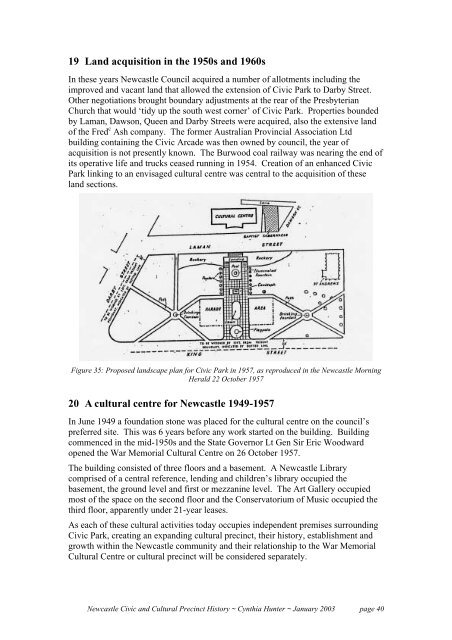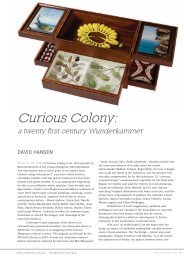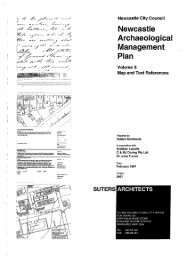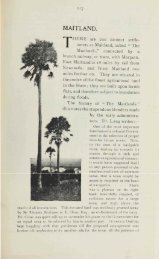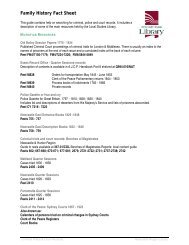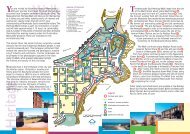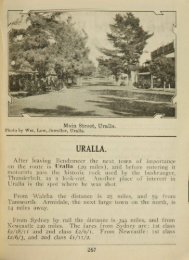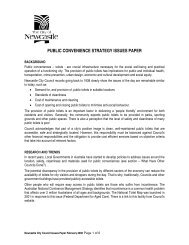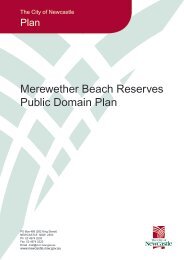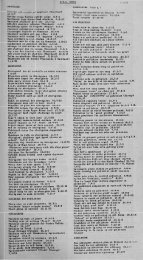Part Two – post 1920s - Newcastle City Council
Part Two – post 1920s - Newcastle City Council
Part Two – post 1920s - Newcastle City Council
You also want an ePaper? Increase the reach of your titles
YUMPU automatically turns print PDFs into web optimized ePapers that Google loves.
19 Land acquisition in the 1950s and 1960s<br />
In these years <strong>Newcastle</strong> <strong>Council</strong> acquired a number of allotments including the<br />
improved and vacant land that allowed the extension of Civic Park to Darby Street.<br />
Other negotiations brought boundary adjustments at the rear of the Presbyterian<br />
Church that would ‘tidy up the south west corner’ of Civic Park. Properties bounded<br />
by Laman, Dawson, Queen and Darby Streets were acquired, also the extensive land<br />
of the Fred c Ash company. The former Australian Provincial Association Ltd<br />
building containing the Civic Arcade was then owned by council, the year of<br />
acquisition is not presently known. The Burwood coal railway was nearing the end of<br />
its operative life and trucks ceased running in 1954. Creation of an enhanced Civic<br />
Park linking to an envisaged cultural centre was central to the acquisition of these<br />
land sections.<br />
Figure 35: Proposed landscape plan for Civic Park in 1957, as reproduced in the <strong>Newcastle</strong> Morning<br />
Herald 22 October 1957<br />
20 A cultural centre for <strong>Newcastle</strong> 1949-1957<br />
In June 1949 a foundation stone was placed for the cultural centre on the council’s<br />
preferred site. This was 6 years before any work started on the building. Building<br />
commenced in the mid-1950s and the State Governor Lt Gen Sir Eric Woodward<br />
opened the War Memorial Cultural Centre on 26 October 1957.<br />
The building consisted of three floors and a basement. A <strong>Newcastle</strong> Library<br />
comprised of a central reference, lending and children’s library occupied the<br />
basement, the ground level and first or mezzanine level. The Art Gallery occupied<br />
most of the space on the second floor and the Conservatorium of Music occupied the<br />
third floor, apparently under 21-year leases.<br />
As each of these cultural activities today occupies independent premises surrounding<br />
Civic Park, creating an expanding cultural precinct, their history, establishment and<br />
growth within the <strong>Newcastle</strong> community and their relationship to the War Memorial<br />
Cultural Centre or cultural precinct will be considered separately.<br />
<strong>Newcastle</strong> Civic and Cultural Precinct History ~ Cynthia Hunter ~ January 2003 page 40


